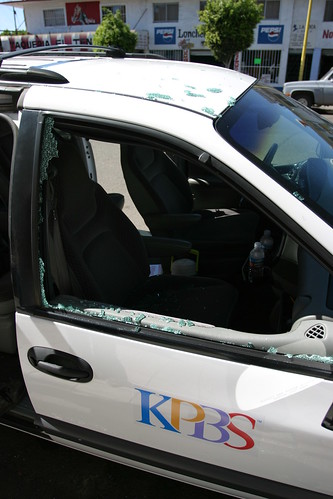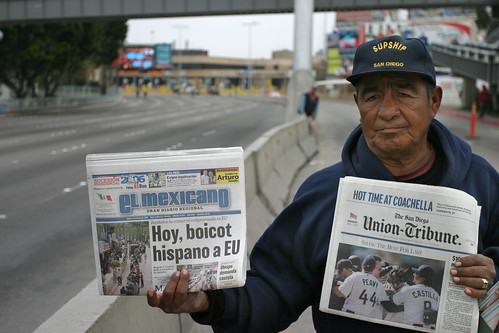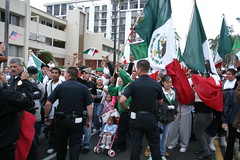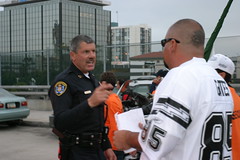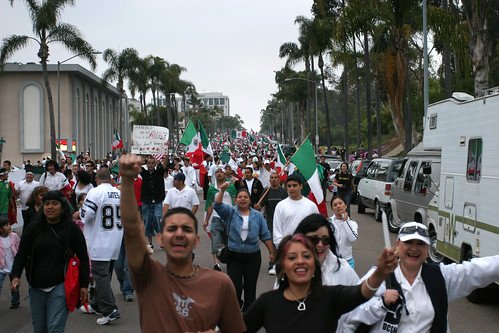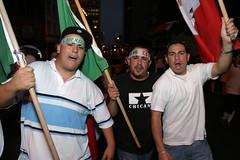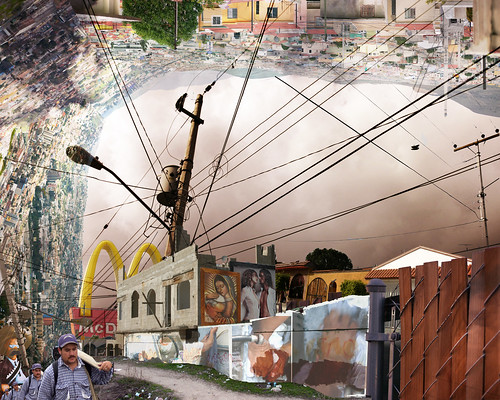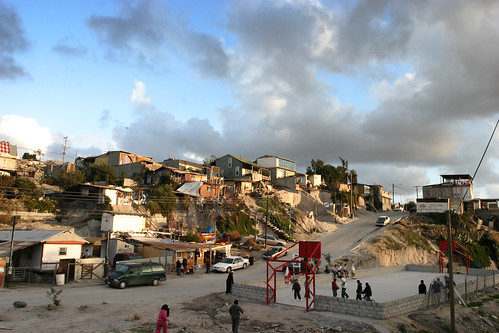One of my favorite songs about América (yes, that accent means I’m refering to the continent) is a song by Chilean hip hop group Tiro de Gracia called “América” from their album Retorno De Misericordia. Listen here and read along:
[display_podcast]
The song begins by describing América as a place of corruption, colonization, corporate exploitation, dictators, murderers.
América tierra vendida, explotada y herida,
América con corrupción, malos trabajos,
explotación, educación, racista, clasista,
hay muchos blancos elitistas
América con dictadores, asesinos
traficantes, mal nacidos
América mi tierra en pie de guerra
América con genocidios
por colonos no bienvenidos
América con Colón igual
muerte destrucción
América con héroes aunque el gobierno los niegue
América con mucha gente inconciente
América con muy pocos inteligentes
América con deforestación
que es igual a la tierra, muerte destrucción
The chorus then states “This is América. When God made Eden, he thought of América.”
América América esto es América
América América esto es América
cuando Dios hizo el edén pensé en América
cuando Dios hizo el edén pensé en América
América América esto es América
América América esto es América
cuando Dios hizo el edén pensé en América
cuando Dios hizo el edén pensé en América
The music and lyrics shift to describe the beauty of América, the people and rich culture.
América tierra de sabor
rimas salchis amador amor
mi tierra y cultura yo Lengua Dura
dura mi gente morena, pelo negro
yo te respeto te amo
América India JAH te bendiga
mi América Pacha Mama esta es mi cama
recuerda que el Perú es igual que tÃ
who are you bu umbudú guerito explotador
mama la pinga por favor
The song is scattered with references to the white racist colonizer and exploiter (You know that’s why I like it). It’s an ode to the good and the bad, a realistic portrait of a truly complicated landmass.
Dedico esto para tÃ
porque soy de aquÃ
con todo el corazón
soy tu caparazón acción
que pocos toman
porque mucho alcohol toman
recuerda que eso a los mapuches hundió
la falsa religión también la muerte apoyó
yo hablo de Historia y GeografÃa de tierra
y aunque a los maricas les duela
como un dolor de muelas
América suelo y tierra, sudor y escuela
This is the song I often think of when I hear people talk about being “American” in the U.S. I know a lot of people think of themselves as “Americans” but are unaware that others who drink Coca Cola but will never visit Disneyland also consider themselves “Americanos” in the continental sense. The saddest part is that many U.S. Americans mistake the country’s economic power for cultural superiority to the Spanish-speaking Américas, making them unworthy of seeing eye-to-eye as neighbors.
About a week ago, I was thinking about writing something up about the song, and on the TdG website (a web disaster, btw) I found the video for “AméricaAmérica,” which I had never seen. Unfortunately, the file took 20 minutes to download… so I figured I might as well upload it somewhere so it can get more access. Out of respect, I thought I should ask. So I did. I sent them an email asking if they didn’t have any problems with me uploading it to youtube. It took a week to get a response, but I got one (which contained the JPG I posted above). Viktor is the group’s Email Manager:
Nathan;
Vaya nuestro mas afectuoso saludo y deseos de paz y respeto para todos los seres humanos. Puedes usar el video de la forma que quieras sin uso comercial …. difundelo y todo lo que necesites …. quedamos a tu servicio.
Adjunto grafitti de la banda
Crew TDG www.tirodegracia.cl
Viktor
I immediately went to upload the video and found someone else had uploaded it while I was waiting for permission. I can’t say I’m any worse off for asking; it is nice to know they care enough to respond. Unfortunately, the video itself is a bit of a let down. From their lyrics, I expected a bit more artistic layering than what they came up with. The song still stands strong, and despite some of the rockstar cliches, they did slip in a few smart scenes and made it clear they are having a good time doing what they do.
